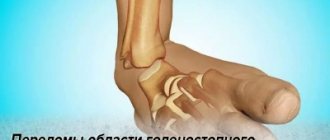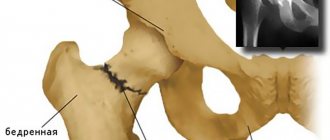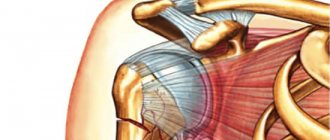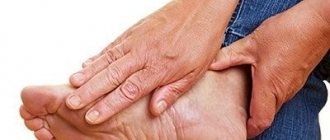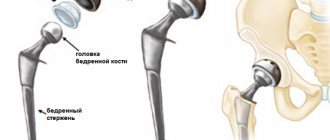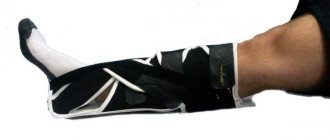Femoral neck fracture. How to get back on your feet after surgery
Privacy Policy:
1. GENERAL PROVISIONS 1.1. These Rules are an official document and determine the procedure for processing and protecting information about individuals using the services of the internet site del-com.ru (hereinafter referred to as the Site). 1.2. The purpose of these Rules is to ensure adequate protection of information about users, including their personal data, from unauthorized access and disclosure. 1.3. Relations related to the collection, storage, distribution and protection of information about users of the Site are governed by these Rules and the current legislation of the Russian Federation. 1.4. The current version of the Rules, which are a public document, is available to any Internet user by clicking on the link https://mercy-nn.rf. The Site Administration has the right to make changes to these Rules. When changes are made to the Rules, the Site Administration notifies users by posting a new version of the Rules on the Site at a permanent address no later than 10 days before the relevant changes come into force. Previous editions of the Rules are stored in the documentation archive of the Site Administration. 1.5. By using the Site, including placing orders or leaving any requests, the User agrees with the terms of this Privacy Policy. Acting freely, of his own will and in his own interest, as well as confirming his legal capacity, the User gives consent to the site to process his personal data both without the use of automation tools and with their use. 1.6. If the User does not agree with the terms of this Privacy Policy, use of the Site must be immediately discontinued.
2. TERMS OF USE OF THE SITE 2.1. When providing services for using the Site, the Site Administration, acting reasonably and in good faith, believes that the User: has all the necessary rights to allow him to use this Site; indicates reliable information about himself to the extent necessary to use the Site; has read this Privacy Policy and agrees with it and accepts the rights and obligations specified in it. 2.2. The Site Administration does not verify the accuracy of the information received (collected) about users, except in cases where such verification is necessary in order for the Site Administration to fulfill its obligations to the user.
3. PURPOSES OF INFORMATION PROCESSING 3.1. The processing of information about Users is carried out for the purpose of providing the User with information about the products of the Site, as well as in order to fulfill the obligations of the Site Administration to Users regarding the use of the Site, including advertising and newsletters.
4. COMPOSITION OF INFORMATION ABOUT USERS 4.1. Personal data of Users Personal data of Users is not publicly available and includes: 4.1.1. provided by Users and the minimum required for using the Site: name, mobile phone number, email address, delivery address of the ordered products. 4.2. Other information about Users processed by the Site Administration: The Site Administration also processes other information about Users, which includes: 4.2.1. standard data automatically received by the http server when accessing the Site and subsequent actions of the User (host IP address, type of user’s operating system, Site pages visited by the user). 4.2.2. information automatically obtained when accessing the Site using bookmarks (cookies). 4.3. Special personal data of Users. 4.3.1. Special personal data of Users includes the necessary information for making online payments on the Site using bank cards.
5. PROCESSING OF INFORMATION ABOUT USERS 5.1. The processing of personal data is carried out on the basis of the following principles: a) the legality of the purposes and methods of processing personal data; b) integrity; c) compliance of the purposes of processing personal data with the goals predetermined and stated when collecting personal data, as well as with the powers of the Site Administration; d) compliance of the volume and nature of the personal data processed, methods of processing personal data for the purposes of processing personal data; e) the inadmissibility of combining databases containing personal data created for incompatible purposes. 5.1.1. The use of personal data for the purpose of advertising and information mailings occurs until the User unsubscribes from them through the link in the received letters. 5.1.2. Storage and use of personal data Personal data of users is stored exclusively on electronic media and processed using both automated systems and personally by the official Site Employee. 5.1.3. Personal data of Users is not transferred to any third parties, except as expressly provided for in these Rules. When specifying the User or with the User’s consent, it is possible to transfer the User’s personal data to third party counterparties of the Site Administration, subject to the acceptance by such counterparties of obligations to ensure the confidentiality of the information received. Providing personal data of Users at the request of government bodies (local government bodies) is carried out in the manner prescribed by law. 5.1.4. The site does not collect, store and process Special personal data specified in Clause 4.3. of this Privacy Policy. Such Special Personal Data is entered by the user directly on the website of the ChronoPay electronic payment gateway and is transmitted to it in encrypted form. ChronoPay's activities comply with the requirements of the Personal Data Law. All actions with personal data of payers are carried out exclusively on the territory of the Russian Federation. In accordance with the requirements of international payment systems, your card data after completion of the payment is not stored either in the Site system or on the authorized ChronoPay server.
6. RIGHTS AND OBLIGATIONS OF USERS 6.1. Users have the right: 6.1.1. Based on the request, receive from the Site Administration information regarding the processing of his personal data. 6.1.2. Withdraw consent to the processing and storage of personal data by sending a written statement via the feedback form. 6.2. The Site is an official resource and the main function of the Site is to provide reliable information about del-com.ru products. Data provided by Users is not visible to other Users.
7. MEASURES TO PROTECT USER INFORMATION 7.1. The Site Administration takes technical, organizational and legal measures to ensure the protection of the User’s personal data from unauthorized or accidental access, destruction, modification, blocking, copying, distribution, as well as from other unlawful actions.
8. USER REQUESTS 8.1. Users have the right to send their requests to the Site Administration, including requests regarding the use of their personal data in the form of an electronic document signed with a qualified electronic signature in accordance with the legislation of the Russian Federation. 8.2. The Site Administration undertakes to consider and send a response to the user's request within 10 days from the date of receipt of the request. 8.3. All correspondence received by the Site Administration from Users is classified as restricted information and is not disclosed without the written consent of the User. Personal data and other information about the User who sent the request cannot be used without the special consent of the User other than to respond to the topic of the received request or in cases expressly provided for by law.
Consequences of a fracture
There are several types of fractures, and accordingly, the patient’s condition depends on the specific case. With adequate treatment, consequences can be avoided or minimized. Often a fracture occurs as a result of a fall on the side, in which the impact falls on the hip and damages the weakest part of the bone - the neck.
Ignoring the injury when the femoral neck is damaged is impossible due to the sharp deterioration of the patient’s condition. Depending on the nature of the fracture, age and general health of the person, conservative or surgical treatment is used, followed by rehabilitation. Surgery is performed more often: implantation of wires, rods, total hip replacement. As a result, joint mobility is restored and the patient is able to walk again.
The consequences of a neck fracture include:
- necrosis of the head of the bone due to impaired blood supply. Necrosis develops, which progresses, deforming arthrosis, irreversible changes occur;
- formation of a false joint inside bone fragments during nonunion;
- vein thrombosis, the development of which is caused by prolonged stay in one position;
- stagnation of sputum and tendency to pneumonia;
- depression.
Sample recovery plan
Rehabilitation after surgery on the hip joint or after a fracture with immobilization begins from the first days. First of all, this is breathing diaphragmatic exercises, which eliminates the risk of congestion in the lungs.
After 7-12 days, massage and physiotherapy sessions are added. They help normalize muscle tone, improve blood supply to the damaged joint, and accelerate regenerative processes.
The basis of rehabilitation after a hip fracture is physical therapy. Dosed physical activity helps prevent complications and quickly return the victim to a full life. Exercise therapy after a hip fracture with immobilization at the initial stage is carried out only for the shoulder girdle. The patient will be able to fully engage in exercise therapy no earlier than after 3-4 months.
In the case of endoprosthetics, passive-active training begins 3 days after surgery. Special gymnastics for a hip fracture are performed sequentially - first lying down, then sitting, and only then standing. Restoring walking skills and full-fledged exercise therapy after hip replacement begins in the 2nd week of the rehabilitation period.
Non-surgical or post-operative restoration of the hip joint takes place at home, where the care of the victim falls on the shoulders of relatives. Not everyone can carry such a load on their own, therefore, it is better to entrust the care of a loved one to a professional nurse. The patronage service “Reliable Support” offers its services. To provide qualified assistance, we will select a staff member trained in managing patients under the fracture rehabilitation program.
Possible complications
The need for a special rehabilitation regimen after a femur fracture is dictated by the high risks of complications. Prolonged immobility, especially in old age, is associated with the occurrence of:
- hypostatic pneumonia, threatening the development of respiratory failure;
- aseptic necrosis (tissue death) of the femoral head;
- intestinal atony (impaired bowel movements due to muscle atrophy);
- thrombophlebitis of the leg veins (slow blood movement provokes the formation of blood clots);
- psycho-emotional disorders (bedridden patients become depressed, become whiny and irritable);
- bedsores that easily turn into open, painful wounds.
Only special care for a bedridden patient with a femoral neck fracture can minimize dangerous consequences.

